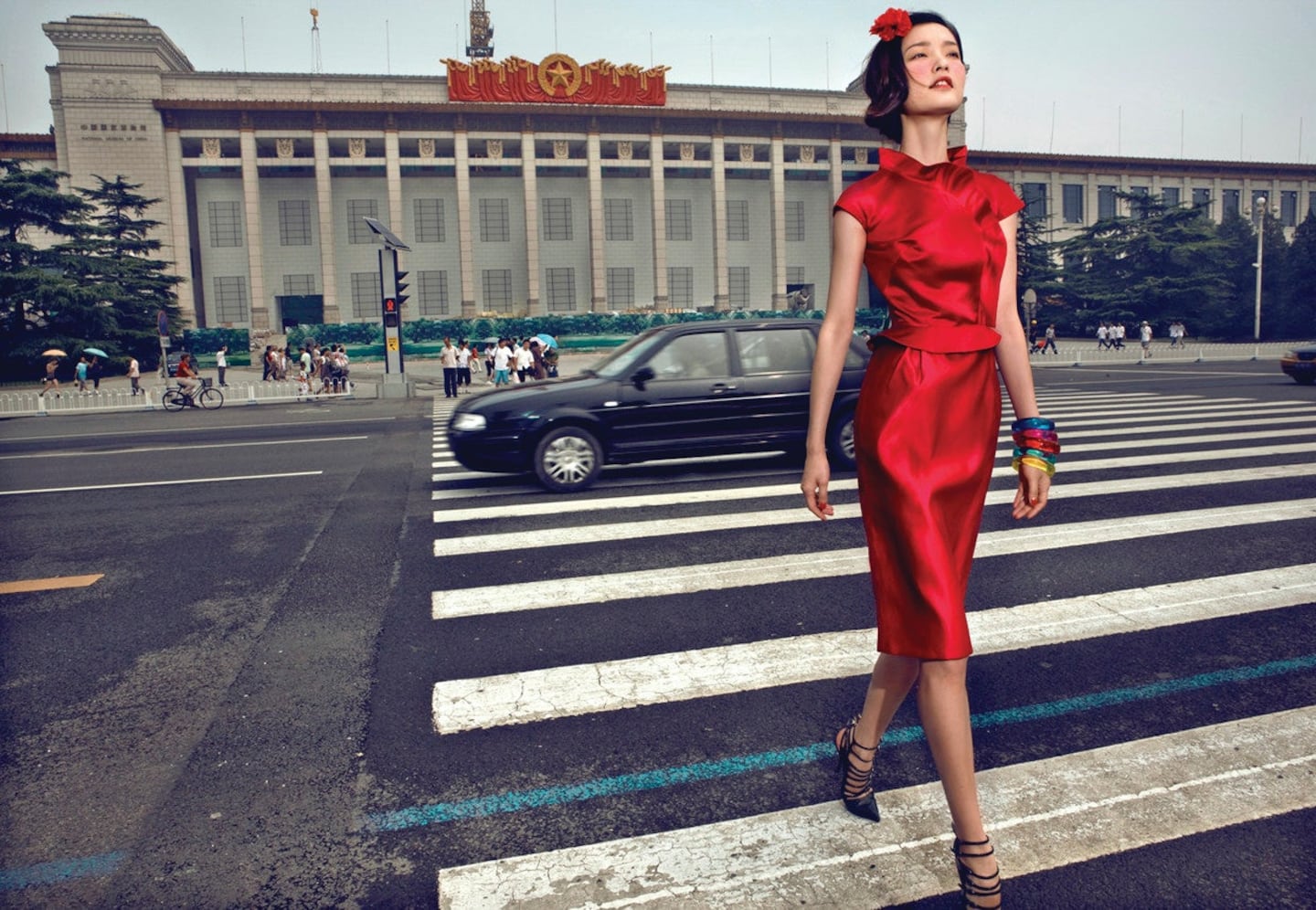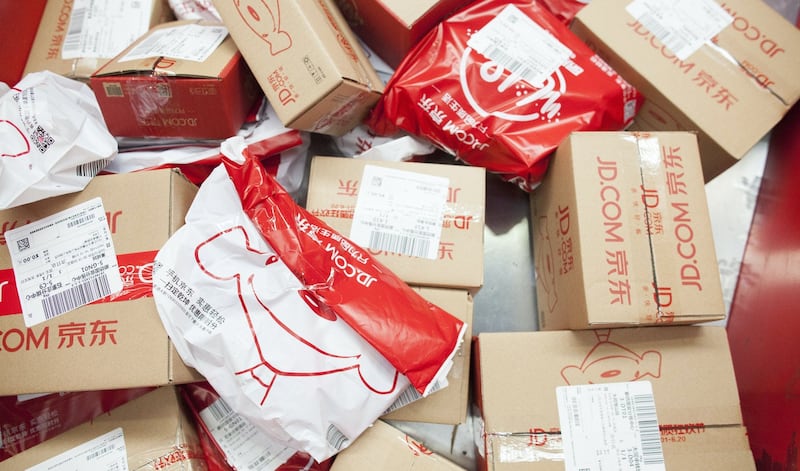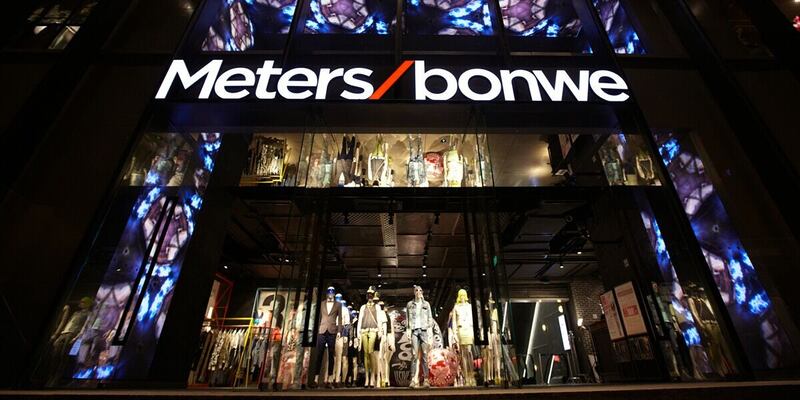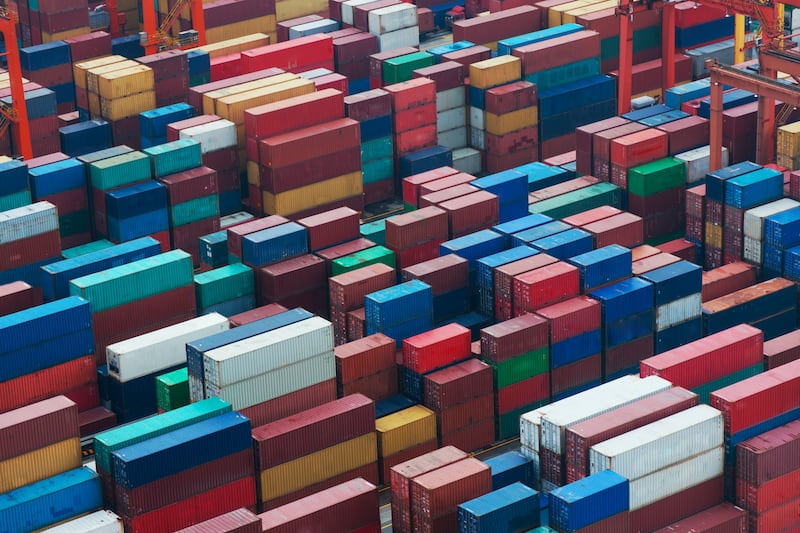
The Business of Fashion
Agenda-setting intelligence, analysis and advice for the global fashion community.

Agenda-setting intelligence, analysis and advice for the global fashion community.

Hello BoF Professionals, welcome to our latest members-only briefing. China’s colossal size and dynamism makes it a top priority for any global business, but it remains opaque to many in the fashion industry. Leveraging our rare access and local knowledge, the BoF China team demystifies the Chinese market with weekly industry analysis and the wider socio-cultural context you need to sharpen your focus.
SHANGHAI, China — It was never a matter of 'if' but rather 'when.'
Actually, it’s still a matter of 'when' as data from leading industry researchers differs on the precise timing of a major shift in the global luxury market: China has either already overtaken the US as the world’s largest consumer of fashion or will do so in 2019.
While China is often touted as the world's largest consumer nation when it comes to luxury goods, the latest figures take into account the broader fashion market, from low-cost apparel to the top of the high-fashion pyramid.
ADVERTISEMENT
According to The State of Fashion 2019, a report co-published last week by The Business of Fashion and McKinsey & Company, "Greater China will for the first time in centuries overtake the US as the world's largest fashion market next year."
The report surveyed more than 270 global fashion executives, and uses McKinsey & Company’s database of over 500 private and public companies to analyse and compare the performance of individual business against their peers by category segment and region.
Figures from market research provider, Euromonitor International, meanwhile, estimate that Mainland China has already overtaken the US as the world’s largest fashion market this year. Their figures put China’s total apparel and footwear market at $372.66 billion in 2018, compared with $354.72 billion for the US.
One of the forces driving the growth of the fashion market here is the government’s long-touted "consumption upgrade" (an official phrase used to describe the growing demand for high-quality, higher-priced goods and services) which China’s domestic brands have rushed to fill alongside their international counterparts.
According to Chen Ke, partner and vice president of Roland Berger Greater China, domestic fashion brands in China are responding not only to consumer demand, but also market forces that have seen wages rise and apparel and footwear manufacturing largely move off-shore, forcing manufacturing powerhouses to shift gears and become brand builders.
China's leading brands have significantly improved in terms of international expansion, mainly via brand acquisition, and design.
“China's value in the fashion industry is gradually shifting from the relatively low value-added OEM (original equipment manufacturer) in the middle of the industrial chain to the relatively high value-added brands,” he says. “At the same time, China's leading brands have significantly improved in terms of international expansion, mainly via brand acquisition, and design.”
The other major driver of fashion growth in China is e-commerce, with consumers in outlying areas of the country gaining enhanced access to a remarkable array of fashion items, both branded and not, due to the ubiquity of platforms such as Alibaba’s Taobao, which “unlocked the ability of Chinese… to become consumers,” according to Zak Dychtwald, founder of Young China Group and author of the book "Young China."
Taobao was followed in quick succession by other major players like Tmall and JD.com, as well as social and niche fashion platforms — Mogujie and Xiaohongshu to name two — focusing on bringing fashion trends to a population of more than a billion people spread over a country roughly the geographical size of Europe.
ADVERTISEMENT
Today, e-commerce accounts for a greater proportion of retail sales in China than anywhere else on earth. Online retail totalled 7.18 trillion yuan ($1.15 trillion) in 2017, an increase of 32 percent year on year, according to China's Ministry of Commerce. By comparison, US commerce department figures put online sales in the country at $453.46 billion last year, at an annual growth rate of 16 percent.
Both of these trends — along with a pause in trade hostilities between China and the US, which halts major increases in tariffs set to be implemented January 1 and is likely to have at least a short-term positive influence on Chinese consumer confidence — are good news for China's domestic fashion brands.
The picture is slightly different for international players, however, with increasing competition from local enterprises big and small — especially in the mass market sector — with better design, faster turnaround and an advantage in local knowledge.
International luxury brands are still somewhat insulated by the lack of credible domestic alternatives, but on the high-street, international brands will have to work harder and experiment more aggressively with local digital and omnichannel strategies in order to reach the growing base of fashion consumers blooming in China’s lower tier cities.
时尚与美容
FASHION & BEAUTY

The Bapy Shibuya store designed by Studio Henry | Source: Courtesy
Bape Relaunches Women’s Brand With an Eye to Asian Consumers
With a new flagship store in Tokyo's trendy Harajuku shopping district decked out in social media-friendly millennial pink, Bapy is taking aim at young Asian women increasingly influenced by streetwear culture. The over-arching BAPE brand was originally the brainchild of Japanese creative multi-hyphenate Nigo, who sold the company to Hong Kong-based I.T. in 2011. In a recent interview with BoF, I.T. founder and chief executive Sham Kar Wai revealed plans to expand Bape both within China and internationally in coming years. Accordingly, the relaunched Bapy will also be made available in major Chinese markets Beijing, Shanghai, Chengdu, Hangzhou and Nanjing, for a start. Specialist streetwear brands for women are in short-supply, and Bapy hopes to capitalise on the under-developed trend with Asia's fashion-forward female consumers. (BoF China)
ADVERTISEMENT
Fake Botox Ring Busted in Eastern China
China is already the world's third biggest plastic surgery market — with the popularity of non-invasive injectables rising precipitously in recent years — and counterfeit versions of Botox, hyaluronic acid and vitamin C have followed the trend. In total, the supplier, traced to a salon in Eastern province of Jilin, sold $4.3 million worth of product to more than 1,000 customers in ten provinces. Police have arrested five suspects in relation to the counterfeit ring, who have since been charged with for endangering public health and not adhering to medical standards. Counterfeit and product safety scandals are a regular feature of Chinese news, and are only boosting the reputation of international brands, which are seen as more trustworthy than local brands. (SCMP)
Valentino Joins Alibaba Luxury Platform With Help From Virtual Influencer
In conjunction with a major pre-fall show in Tokyo, the brands first co-ed catwalk outing, Valentino and Alibaba announced the Italian brand would be the latest luxury player to join Tmall's luxury platform, Luxury Pavilion. The announcement was accompanied by a live-stream of the show, and an appearance from virtual influencer Noonoouri dressed head to toe in Valentino. Though the wide-eyed idol is a virtual construction, she boasts 180,000 fans on Instagram and has established cooperation with luxury brands including Chanel, Gucci and Dior. There seems little push-back from followers about the real versus virtual nature of influencers, particularly in China, indicating Noonoouri is likely the vanguard to a growing trend. (BoF China)
科技与创新
TECH & INNOVATION

JD.com packages | Source: Shutterstock
JD.com Rumoured to Have Lay-offs on the Horizon
JD.com has had a tough 2018 by anyone's standards, with CEO Richard Liu embroiled in an ongoing rape case, and the company's stock price taking a significant hint. A Chinese finance blog reported in late November that the company would respond to its struggles with an initial round of lay-offs that would affect 10 percent of staff on its JD Mall platform, and as many as 20 percent of staff from its financial services arm, which is reported to be eyeing an IPO over the next two years. JD refuted the rumours that lay-offs were due to poor performance, and released a statement saying that the planned cuts are nothing but "normal staff turnover" and "elimination of incapable employees," with an aim to optimise the enterprise. (SupChina)
Live-streaming Platforms Surpass 600 Million Users in China
A report released at the end of November shows live-streaming user numbers in China reached 609 million as of June 2018. The '2018 China Online Streaming Development Study Report', released by the China Netcasting Services Association also estimated the value of China's live-streaming video market at more than 201.6 billion yuan ($29 billion) this year, up 39.1 percent over 2017. Even bigger year-on-year comparison growth was seen in the short-video market, dominated locally by players such as Douyin and Kuaishou, which saw its estimated market value climb 106 percent, to 11.8 billion yuan ($1.7 billion) this year. These numbers are good news, not only for the platforms, but also the KOLs who commonly use them to monetise their influence through direct sales and brand partnerships. (Xinhua)
Bytedance Combats Rumour Mongering With Cash
Bytedance-owned news aggregator Jinri Toutiao recently launched an initiative called 100 (or Rumour Zero Zero) that will offer cash rewards of $40 to $440 to accounts publishing articles debunking fake news and pseudoscience on the platform, which currently boasts 120 million daily users. The platform has consistently come under pressure from China's government to crackdown on content deemed damaging to Chinese netizens, and Jinri Toutiao has banned 9,026 accounts and removed more than 500,000 suspect articles since May using a combination of human censors and AI technology. As the future of all content-driven platforms in China depends on staying on the right side of blurred and constantly shifting political winds, cash incentives seem as good a method as any to motivate users to get in on the fun. (Tech in Asia)
消费与零售
CONSUMER & RETAIL

Metersbonwe's store | Source: Courtesy
Metersbonwe Continues Brick and Mortar Roll-out Across China
Chinese high street clothing giant Metersbonwe continues to open brick and mortar stores in strategic locations around China — even as the ubiquitous affordable casualwear purveyor struggles in the face of local competitors popping up with superior trend and design quotients in a similar price range. According to Zhou Chengjian, Chairman of Metersbonwe Group, the current strategy involves opening 100 'City Stores' or superstores around established and up-an-coming consumer centres, with product lines and experiences aiming to please the whole family. This approach gels with the broader 'experiential' approach being pursued by brick and mortar retailers to counter the boom in e-commerce, but it remains to be seen if Metersbonwe can win back ground already lost online and to more nimble rivals. (Lianshang)
Taobao Releases 2018 Cross-border E-Commerce White Paper
According to research released last week by Taobao, cross-border e-commerce, known in China as haitao, sees China's post-80s generation drive the most purchases, many of them driven by a search for the safest and best products for their young families. However, the fastest growing segment of consumers is that born after 1995, boding well for the future of the sector. Perhaps unsurprisingly given beauty and mother and baby sectors traditionally perform particularly well for cross-border retailers, a whopping 8 out of ten shoppers are women, and the hottest destination from which products are sourced remains the US, Japan and Korea. For all the talk of a growing acceptance of local brands among Chinese consumers, the desire for safe and high quality international products remains undiminished among important consumer groups. (Dian Shang Bao)
Hangzhou Plans to Become China’s Number One ‘New Retail’ City
According to a recently released draft proposal from Hangzhou's municipal government, the city, which is home to e-commerce giant Alibaba, plans to allocated 100 million yuan ($14.6 million) annually to support and develop new retail initiatives in China. It's thought the bulk of the funds will go towards helping existing retailers upgrade to a new retail model, utilizing big data to blur the lines between online and offline and, in the process making retail as convenient as possible for consumers. As new retail becomes the norm in China, expect to see more forward-thinking local governments investing in similar policies to transform local retail industries for a new era. (Hangzhou.gov)
政治,经济与社会
POLITICS, ECONOMY, SOCIETY

Cargo freight containers at Hong Kong's sea port | Source: Shutterstock
US-China Trade Truce May Extend, Rather Than End the War
On the sidelines of the G20 summit, Chinese President Xi Jinping and his American counterpart Donald Trump agreed to a three-month suspension of further tariff escalations, while both sides work towards a more permanent deal. The news was welcomed positively by markets, but the two sides remain far apart on major issues and few commentators are optimistic that an agreement can be made by the new deadline of March 1. The extension does, however, give both Xi and Trump some breathing room over the important Christmas (in the US) and Spring Festival (in China) holiday periods, which would have been a gloomier affair on both sides if planned widespread tariff increases had gone ahead on January 1. (Bloomberg)
Crazy Rich Asians’ Long Awaited China Release Flops
With an opening weekend estimated at little more than $1 million, it seems a rom com cast entirely with Asian characters hasn't proven as novel with Chinese audiences as it did with Western ones. According to Variety, the film lagged behind local film "A Cool Fish" and the Marvel superhero film "Venom". Still, given the sequel to the Crazy Rich Asians film is set to be based at least partly in Shanghai and producers are looking at making it a co-production with a local partner, the legitimacy incurred by being one of only a few dozen foreign films allowed to show on the Mainland each year may prove significant. (Variety)
Jack Ma Has Been Outed as a Communist Party Member, But Does it Matter?
It's unclear why Jack Ma decided to become one of the approximately 88 million dues-paying members of the Chinese Communist Party. While a close connection to the Party and therefore the government is useful to the billionaire owner of a technology company and can help grease some regulatory wheels, Ma could be a true believer in the China model that has lifted hundreds of millions of people out of poverty over the past few decades. Regardless, with Ma's plans to step down from his role as executive chairman at Alibaba in 2019 and the news being an open secret since 2015, Yonden Lahtoo argues that the revelation won't make much of a difference in the grand scheme of things. (SCMP)
China Decoded wants to hear from you. Send tips, suggestions, complaints and compliments to our Shanghai-based Asia Correspondent casey.hall@businessoffashion.com.
With consumers tightening their belts in China, the battle between global fast fashion brands and local high street giants has intensified.
Investors are bracing for a steep slowdown in luxury sales when luxury companies report their first quarter results, reflecting lacklustre Chinese demand.
The French beauty giant’s two latest deals are part of a wider M&A push by global players to capture a larger slice of the China market, targeting buzzy high-end brands that offer products with distinctive Chinese elements.
Post-Covid spend by US tourists in Europe has surged past 2019 levels. Chinese travellers, by contrast, have largely favoured domestic and regional destinations like Hong Kong, Singapore and Japan.